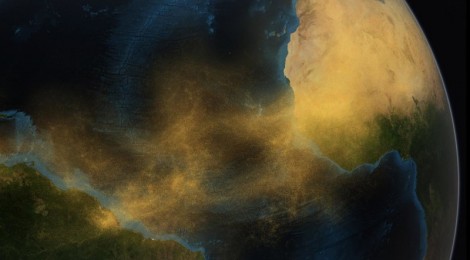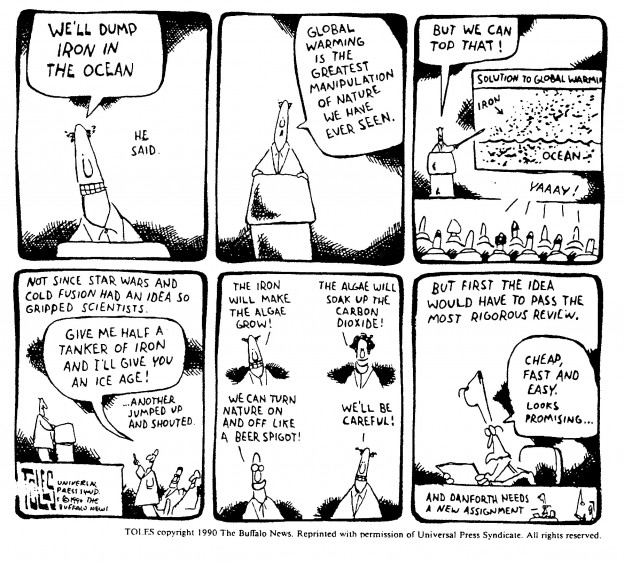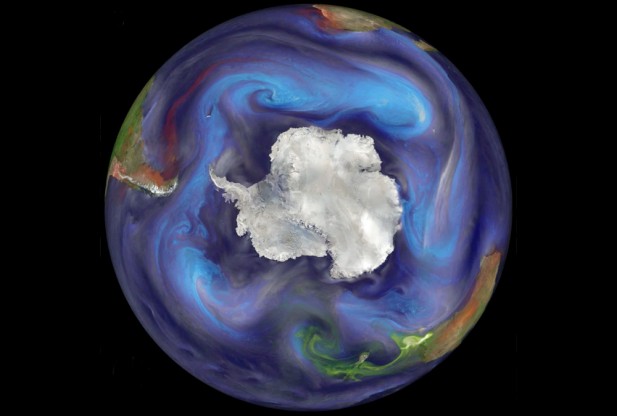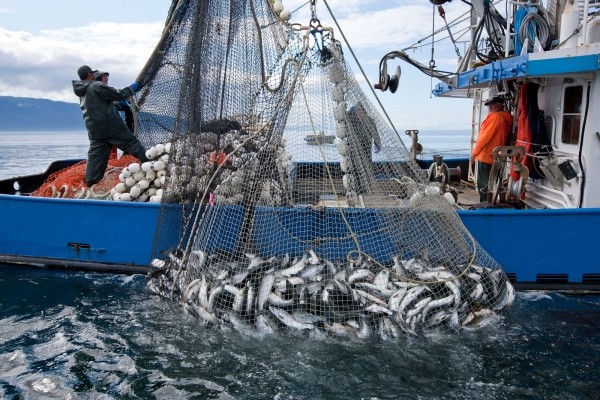
Oceans Today Receive A Tiny Fraction Of Dust In The Wind As Past Ages
Just published in the Journal of Geology is a paper detailing the history of dust in the wind and it’s historic influence on ocean pastures and productivity.
Oceans of today are receiving as little as 1/16th of the wind blown vital mineral dust as they once did.
In those dusty times of old the dust in the wind resulted in this blue planets oceans being vastly more productive than they are today. So much ancient ocean photosynthesis occurred it thinned the global ‘greenhouse blanket of CO2’ so much so that the dust stimulated oceans were a primary cause of sending the earth into its ice ages. The author of this stunning paper describe how dust driven ocean plant-life, phytoplankton, are the most powerful part of the planet’s carbon cycle and have been so for 500 million years! (Paleozoic dust http://www.geosociety.org/news/pr/2015/15-87.htm)
Dust begets life, and Earth’s atmosphere 300 million years ago was perhaps the dustiest of all time, with large consequences for carbon cycling and climate. In a new paper for Geology, Sohini Sur and colleagues examine the bioavailability of iron in dust from Earth’s penultimate icehouse of the late Paleozoic. Dust links to carbon because of the iron it carries — a key nutrient for nearly all life, so atmospheric dust acts as a micro-nutrient fertilizer. Keep in mind when compared to what most people think of as ‘fertilizers’ atmospheric dust produces vibrant ocean growth when delivered at infinitesimal concentrations of less than 1 billionth the concentration of todays agricultural and garden “fertilizers.”
Vast volumes of dust deposits dating from the late Paleozoic, from both land areas and marine reef deposits, record a remarkably dusty atmosphere. Also this dust correllates well to ocean plankton pastures capturing and sequestering much higher levels of ancient atmospheric CO2 and to drawing down that high atmospheric CO2 to much lower levels of CO2 than are seen today! Moreover these dust deposits contain ideal concentrations of reactive iron. This concomitance — dust with exceptionally high values of bioavailable iron — implies major ecosystem fertilization and an associated massive drawdown of atmospheric carbon. Clearly the oceans have the capacity to do the same today.
The late great ocean scientist John Martin brought this phenomenal power of ocean plankton to life in 1989 as seen in this political cartoon.

Sadly the ‘iron ass’ President of the USA at the time while noting this would be cheap, fast, and easy didn’t have the balls or the pennies do anything about it so 25 years have gone by with the problem getting worse!
The biogeochemical impacts of iron-rich dust to the oceans are known for Earth’s recent record but unexplored for deep time, despite recognition of large ancient dust fluxes, particularly during the late Paleozoic. Sur and colleagues report a unique iron relationship for Upper Pennsylvanian mudrock of eolian origin that records lowstand (glacial) conditions within a carbonate buildup of western equatorial Pangaea (now the western United States).

The image shows the emission and transport of dust and other important aerosols to the Southern Ocean on Dec. 30, 2006. (Image courtesy of William Putnam and Arlindo da Silva, NASA/Goddard Space Flight Center) read more…
This work follows and confirms once again the life’s work of famed Oceanographer the late John Martin who in the late 1980’s revealed just how potent and necessary mineral dust is for the ocean pastures. Martin hypothesized that by taking mere tens of thousands of tonnes of iron rich dust to restore and revive ocean plant life the vast majority of the crisis of anthropogenic CO2 could me effectively mitigated. In the bargain as ocean fish pastures grew lush and green with phytoplankton they would gain the pasture carrying capacity to sustain billions of additional fish every year. His solution to both climate change and global famine was to care for creation by restoring ocean pastures and that the cost would be incredibly tiny perhaps only a few millions of dollars each year to restore all of the worlds seven seas!
Following Martin’s charted course the world ocean science community has spent the last 25+ years working on investigations of this practical ‘save the world’ solution. In 2012 I was able to perform the large demonstration/trial that Martin and the rest of the global ocean science community had called for. We restored a large vital ocean fish pasture of just under 50,000 sq.km in the Northeast Pacific with iron rich mineral dust. The pasture responded precisely the way such pastures do when natural dust falls occur, it bloomed with incredible abundance. While immense scientific data was amassed the best of the results were seen in following years in the return of hundreds of millions of additional fish, salmon, from their revived pasture.
It is now clear that at the trivial cost of a few millions of dollars each year that a global ocean pasture restoration effort could be sustained in all of the world’s Seven Seas beginning immediately. Each and every year such an effort would result in the capture of billions of tonnes of atmospheric CO2 converting it safely and effectively into ocean life itself. As an additional blessing of this vital work billions of additional fish would swim into the nets and onto the plates providing low cost nutritious food for the world’s hungry. It is the natural way of life on this planet all we need to do is help to restore the balance we have disturbed in our orgy of burning of fossil fuels.
Or of course tens of thousands of us who are attending the Paris COP21 event in a matter of days and spending one billion dollars for the 11 day event might just party til its over. The alternative is far better as mere millions to restore and sustain ocean pastures will simply work.









